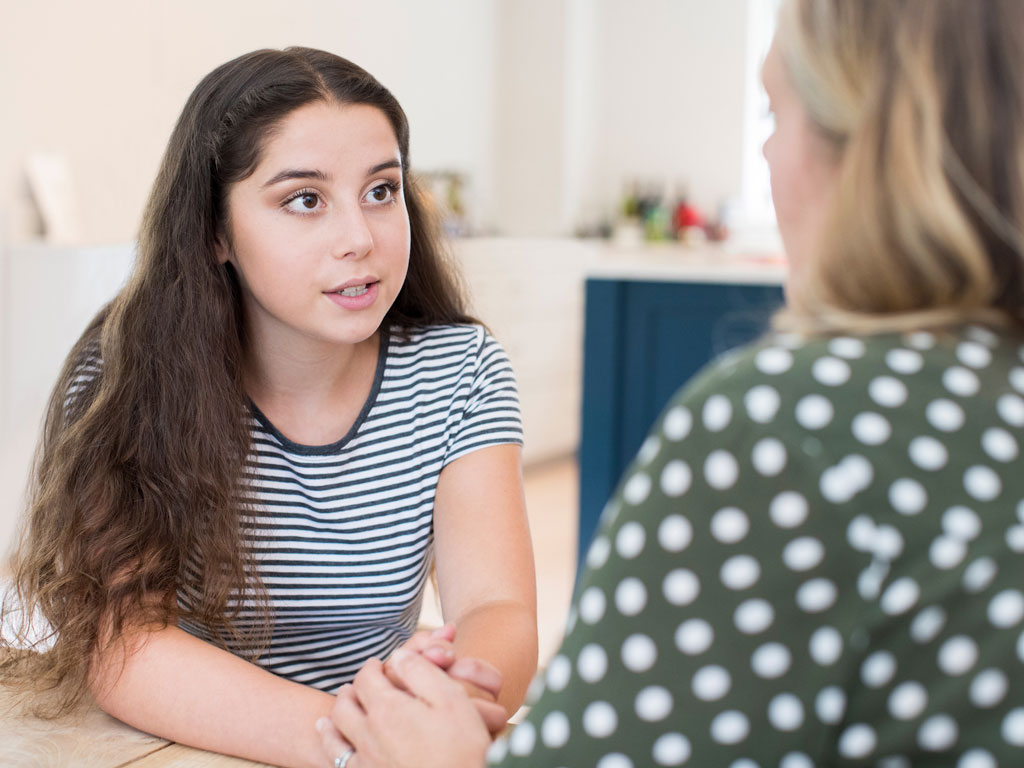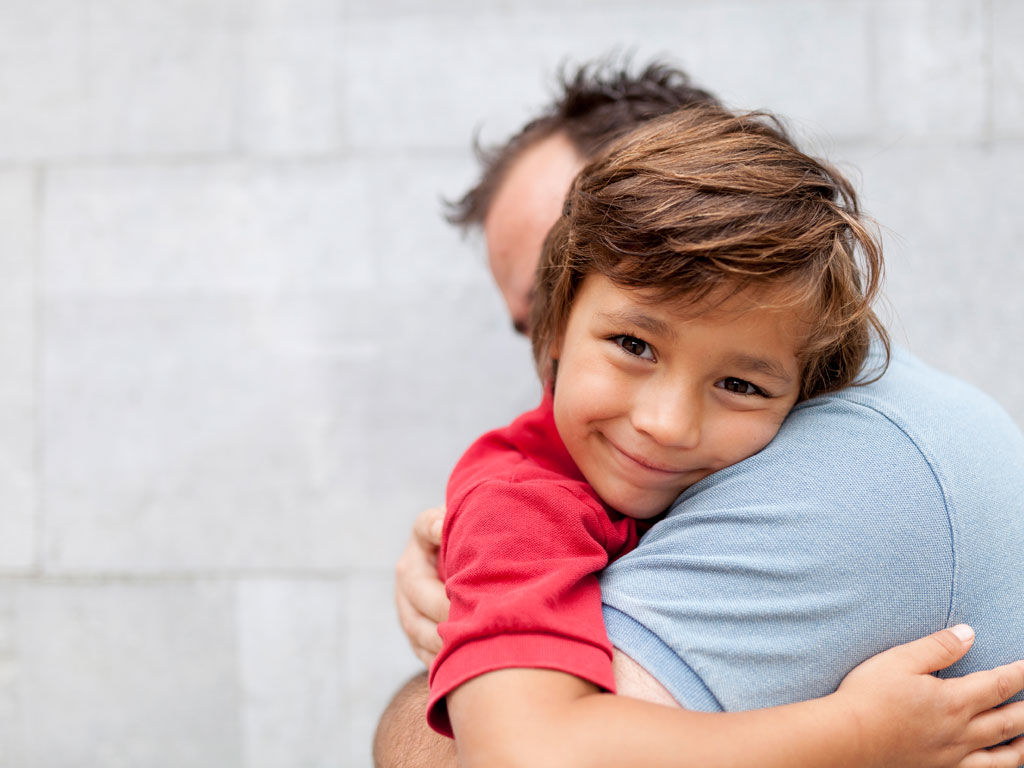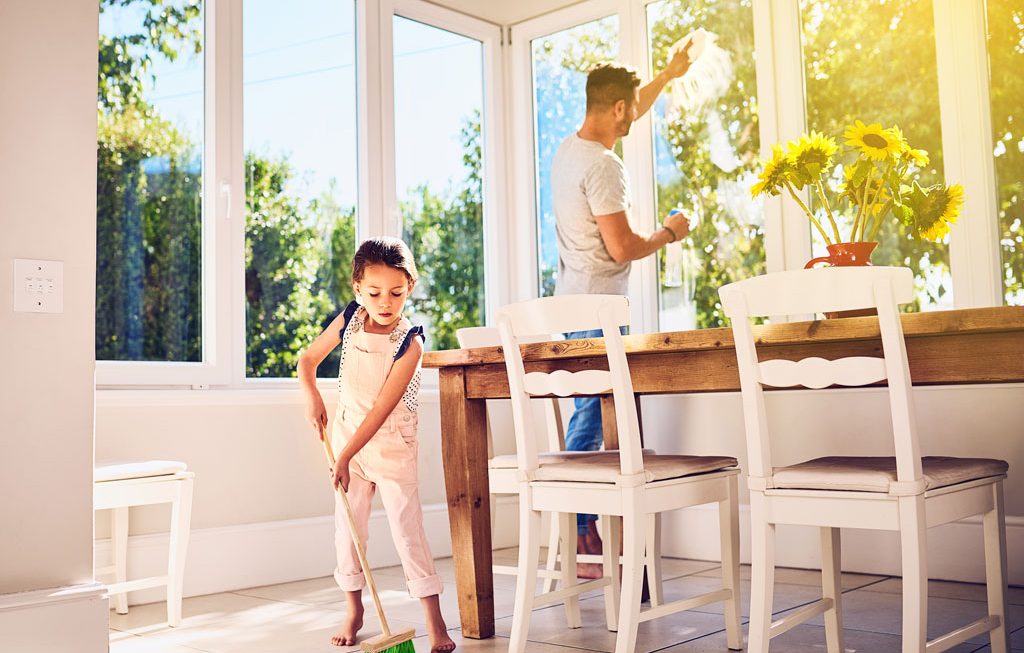by Rebecca Hastings
My daughter’s eyes were filled with tears and my voice was louder than it needed to be. We were arguing over something trivial and small.
Or so I thought.
We had gone round and round about the homework she was struggling with. She was convinced she wouldn’t be able to do it, and I was confident she could if she just pushed through. It was a moment when I could see her potential more than she could. She felt like she was sinking, and all I saw was her refusal to stand up in the shallow water.
After going round and round we were both exasperated. Heels dug in tight, I realized I needed to be the one to move first. All I could think was to ask a question:
“What do you need?” I pleaded.
“I don’t know, Mom.” And the tears came.
In that moment I knew she had no idea what she needed and it was my job to figure it out with her. This wasn’t about helping her with homework; this was about helping her find her way.
Older children often don’t know what they need. Most kids don’t, but when they’re young we step in more willingly. Now that our babies are more at eye level we look at them expecting adult choices, forgetting that sometimes they don’t know how to figure things out on their own.
Here are 6 things your child may not have a clue he or she needs.
1. Physical Touch
As our kids get older we are less likely to hug them, snuggle with them, or give them physical reassurance. This is especially true with boys because of gender expectations. While much research has been done on the effects of physical contact for babies and young children, we forget that some of the same benefits apply to older children.
“Hugging triggers the release of feel-good hormone, oxytocin that can lower the level of stress hormone and counter its anxiety effects.” (Parenting for Brain)
This dual benefit helps children in a way they cannot verbalize, making the situation they are facing easier to handle.
When my daughter is spiraling emotionally and I gently pull her into a hug she immediately collapses against me, letting the burden leave her as she falls into me. For some, hugs may be too much, but other types of physical touch can benefit them. A hand on the shoulder or a few minutes sitting side by side is enough to bring the same benefits.
2. Sleep & Rest
The need for and benefits of sleep for children has been highlighted recently with studies showing that children are not getting enough sleep for proper development. While much of the recent research has focused on the sleep/school connection for children, there is far more concerning the need for adequate rest.
Thinking back to those crazy years when I had three kids in as many years, everything is a blur. I spent five years sleep-deprived, and as a person who doesn’t function well without her eight hours, some days were difficult. I was irritable, unable to solve problems well, and couldn’t think clearly. Now, think of those same effects on the physically and emotionally developing child brain.
I don’t need a study to confirm that my kids function better with good sleep. This can feel tricky with teenagers as changing physiology, more homework, and seeking independence keep them up later and later. Shifting the focus from actual sleep time to rest has helped in our household.
Encouraging kids to get stressful tasks requiring a lot of thinking done earlier in the evening allows them to use later times for unwinding. This can be with some electronics, but research is clear that the use of electronic devices late at night is not good for anyone.
Finding things that are relaxing like a shower, reading, listening to audiobooks, journaling, drawing, or other non-stressful, quiet tasks are a great way to ease into a better sleep routine.

3. Expression
Older children often struggle with appropriate ways to express feelings. At times their feelings are new and foreign or mixed up in a way that leaves them uncertain what they feel at all. Giving them ideas for ways to express themselves helps. And the best way to do that is by modeling.
It’s no secret that telling a child to do something doesn’t always work, but if they see people they love and trust doing something they may give it a try. Modeling a variety of ways to express thoughts, ideas, and feelings will help them see they have many options. Much like a buffet, when they are presented with an assortment of possibilities, they may try a few until they find what they like.
Talking is the most obvious way we express ourselves, but there are many more possibilities. Writing, drawing, creating, cooking, and building are a few ways you can foster expression. Some need something more physical so things like running, hiking, swimming, sitting at the beach, or even swinging on the swings can help.
The key is to try many things, and be okay when they don’t work. When children see you finding your way, even with a struggle, it helps them know there is nothing wrong or unusual with their own.
4. Exercise
Very similar to expressing your feelings, exercise presents positive benefits that are often overlooked because we don’t know how to incorporate it in our lives. Teens especially struggle with this, even those that play sports. While playing a sport is a physical activity that will benefit them, it can also become a responsibility or burden associated with pressure.
I don’t love exercise. But I try to walk or hike regularly. It has little to do with physical health benefits and more to do with the clarity and mental well being it fosters. Much study has been done on the benefits of exercise. It is proven that people who exercise “feel more energetic throughout the day, sleep better at night, have sharper memories, and feel more relaxed and positive about themselves and their lives.” (Helpguide.org)
All of these benefits will help children in ways they often cannot pinpoint. Giving them ample opportunity to try different types of exercise will also help them develop habits that will serve them later in life.
Even if they groan and complain, drag the family out for a hike or take them to the pool. Head to the trampoline park, shoot hoops, or challenge your child to a 5K. Teens tend to let exercise go at a time when they may need it most. You can make sure they still have the opportunity to get moving. Plus, they may love the chance to beat you in a race.

5. Listening
This tip is the one most parents roll their eyes at and brush past. They often find themselves in the “My-kid-never-tells-me-anything” camp or the “My-kid-never-stops-talking” camp. Neither of which sounds very fun.
We are often surprised to learn that older children want better communication with their parents. As parents, we sometimes lack the time, interest, or skills necessary to effectively listen to our kids.
Listening is not always easy, and sometimes the results may not be noticeable, but fostering an environment of caring about what your child has to say is helpful. Even if it is about the latest basketball team or what someone said to someone else that made another girl cry, this environment will benefit both of you.
6. Grace
This idea is one you won’t find many places, but I have found it to be one of the most important things to teach my child. Teens today are growing up in a high-pressure society. AP courses, college, grad school, high paying jobs all feel like necessities to make it in this great big busy world. Sometimes they are so busy trying to be the best and to get ready for the next step that they are miserable.
Simple reminders and parent behavior make a big difference here. If the only things we ask about school have to do with grades, sports, and college applications we are showing our kids that those are the most important things. When they lose a game or get a low grade it suddenly becomes devastating. We have the power to change that.
My daughter came home one day upset about her math quiz grade. She was crying because she wanted it to be higher, to be better, to be perfect. After listening to her talk for a few minutes I asked one question: “Do you know what I got on my math quiz in 7th grade?”
She looked at me with wide eyes, eager to see how we measured up against one another.
“No.”
“Neither do I.” She may have rolled her eyes when I said this, but it showed her that it’s okay to let things go sometimes. We need to give ourselves grace when we make mistakes. That is what enables us to learn well and move forward without anger or bitterness.
Look for ways you can teach your child about grace today. It may mean the difference between a stressful meltdown and a small bump in the road.
And one final note, this idea of grace works for you, too. As parents, we want so much to get it right, but the truth is sometimes we will miss the mark. Give yourself grace in those moments and move forward. It’s worth it.





